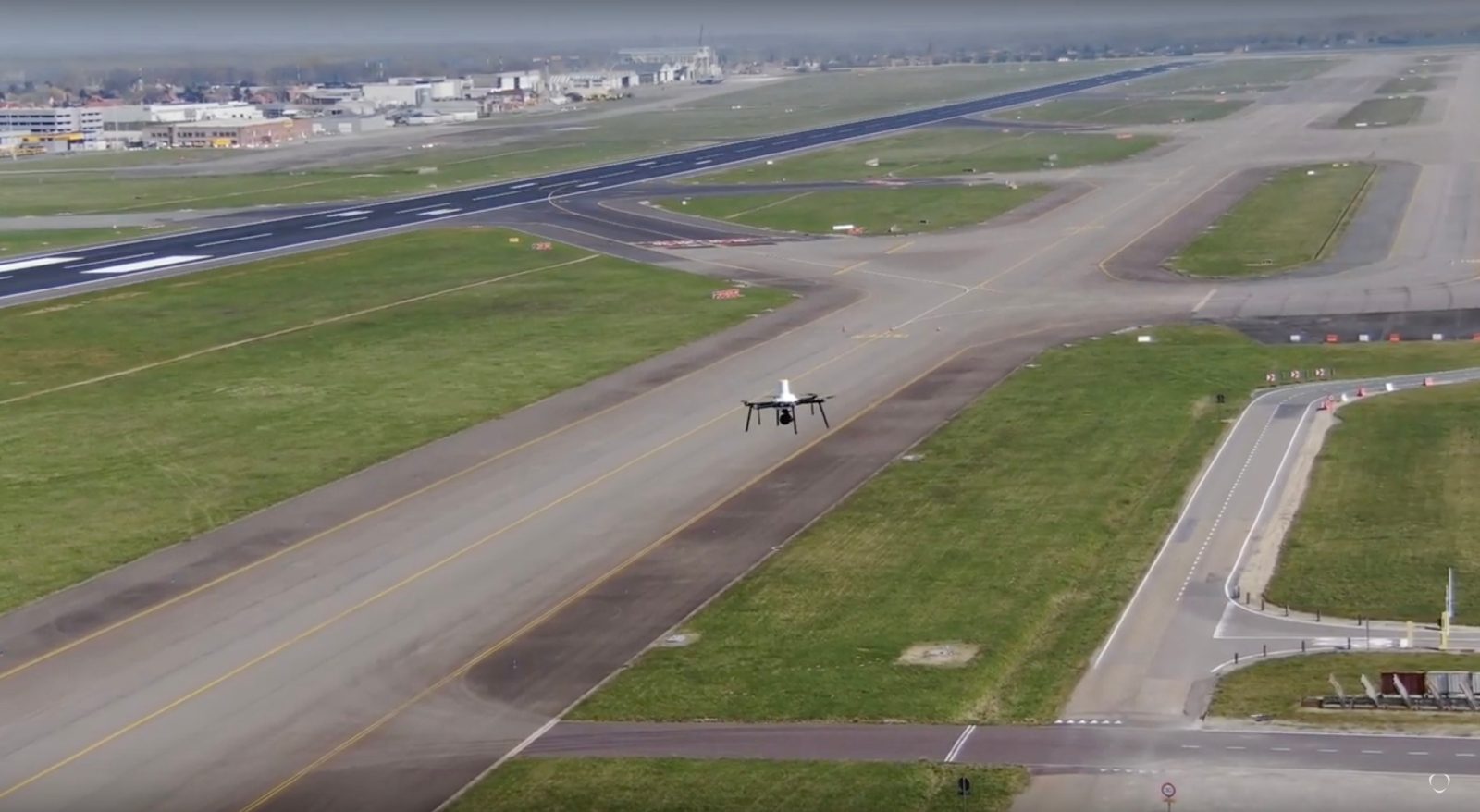
In normal times, flying prohibited drones in an airport space is as unthinkable as it is insane. Right now, however, the craft are not only buzzing around the runways of Brussels’ main airport, but are central to a test by the facility’s operator to decrease the risk of bird strike.
Brussels Airport and its traffic control service provider Skeyes are currently running trials using drones around normally prohibited sections of runway airspace to see if they can significantly lower the threat of bird-plane collisions. The testing, which began September 9, involves the craft flying in more remote sections that are harder for the habitual car patrols to reach. Dry runs earlier this year found uncrewed aerial vehicles (UAV) to be effective in identifying and flushing birds out of grassy margins beside runways. The current models are also outfitted with speakers that can blast screeches from birds of prey to enhance the fear response.
The effort seeks to decrease the risk of bird strike that – on occasion – can be provoked by the creatures being spooked from grass by departing planes, and rising directly into their path.
Brussels Airport, which covers 12.5 square kilometers, normally relies on cars in its Bird Control Unit to patrol the edges of runways between takeoffs, and keep them clear of animal life. But given the wide area involved, officials have turned to telecom service provider Citymesh, which also offers drone flight and information solutions. As part of that, Citymesh uses the craft to detect, monitor, and, when necessary, chase gathering birds from the outer areas.
Citymesh says the typically prohibited drones are flown around the airport remotely, in beyond visual line of sight mode, and provide real-time HD video to controllers in the company’s headquarters. Flight of the craft is carefully planned around the schedules of outbound passenger planes to ensure that – far from posing a safety threat themselves – the UAV can effectively decrease the risk of bird strikes to airliners.
“Although drones and aviation do not initially seem like a good combination, this is a new reality, the possibilities of which must be explored,” notes Brussels Airport CEO Arnaud Feist. “Drones can be additional tools in our operations, and these tests will give us more insight into the possibilities.”
Feist says the goal of the current testing is determine if use of drones to check on and break up birds around the runways is both effective and practical as a potentially integrated element of daily airport operation. Part of that will depend on one aspect the trials that facility’s operators promise won’t be a problem: disruptions to flight schedules due to UAV presence.
FTC: We use income earning auto affiliate links. More.



Comments